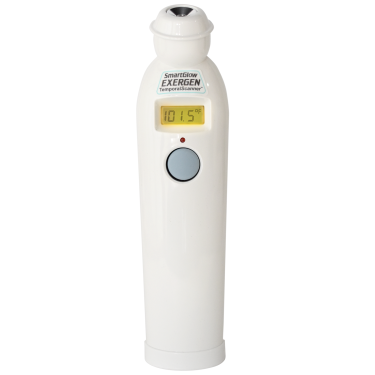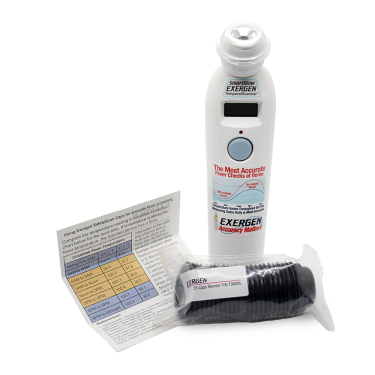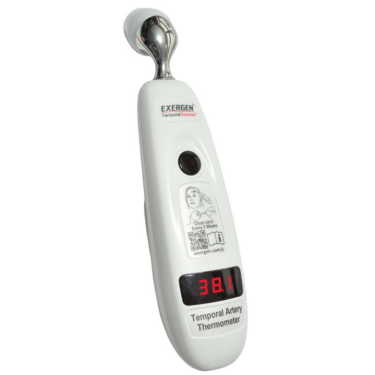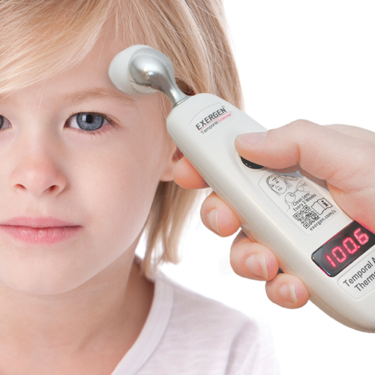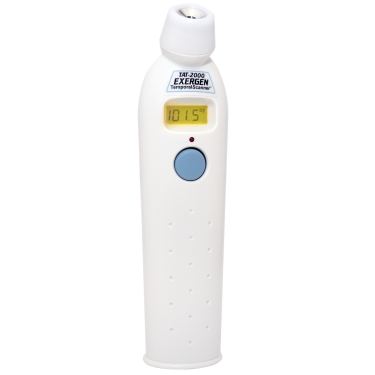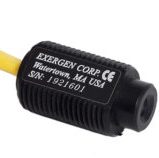Exergen Launches Nurse Support Program to Ensure Access to an Accurate Thermometer at Home to Protect Themselves and Their Families
Studies prove that patient-facing nurses and their households have a three- and two-fold increased risk of COVID-19 hospitalization, respectively. New vaccines promise to reduce the risks, but they are not perfect and have side effects of their own. Accuracy in checking for fever at home is more important than ever.
The accuracy of the Exergen Home Model, like the Professional Model used by millions of nurses every day, is backed by more than 80 peer-reviewed published studies, and billions of accurate temperatures taken every year in hospitals and clinics.
Our daily circadian rhythm regulates our body temperature, which is lowest in the morning, and highest in the evening. New research shows this occurs with fevers as well. Checking for fever twice daily, morning and evening, is the most accurate method at home.
Q&A’s on Temperature Screening at Home
Q. What are the recommendations for back-to-school and back-to-work temperature screenings?
A. Back to school and back to work recommendations from authorities direct temperature screenings to be done at home. • American Academy of Pediatrics (AAP) School Guidelines • Centers for Disease Control and Prevention (CDC) • Occupational Safety and Health Administration (OSHA)
Q. How do circadian rhythms impact temperatures and assessments of temperatures?
A. Our internal biological clocks produce circadian cycles that vary throughout the 24 hours of each day. This causes body temperature to vary about 1.6°F (0.9°C) between the lowest temperatures in the morning and the highest temperatures in the evening. With fever, the circadian variation still occurs, but at higher temperatures. Accordingly, temperature assessments in the morning are low and will miss about half of the fevers. Temperature assessments in the evening are high and will detect all the fevers.
Q. When should temperatures be taken?
A. Twice Daily. Before leaving for school or work in the morning, and at dinner time in the evening. If a fever is detected at either time, a medical care professional should be contacted immediately. Even if school or work is done on-line, it is important to check temperature twice daily for the health of the family.
Q. What makes thermometers accurate? What should we know about thermometer accuracy? How about non-contact thermometers?
A. Published peer-reviewed clinical studies. Without such studies by medical professionals, there is no assurance of accuracy on children and adults in all settings. Non-contact thermometers are well known to be inaccurate, with unavoidable errors of +/- 4 deg F. They have no published peer-reviewed clinical studies supporting their accuracy.
Q. What types of thermometers are recommended for use in schools and workplaces? For use by families?
A. Only those thermometers are clinically accurate as demonstrated by published peer-reviewed clinical studies.
Q.Can you explain how a thermometer margin of error might guide the choice for a cut-off of fever?
A. Some attempts to use a lower cut-off for Covid-19 screening have been made due to the low readings of the non-contact thermometers from their inaccuracies. These attempts have been unsuccessful in “improving” the non-contact devices’ accuracies. A thermometer with accuracy backed by more than 80 published peer-reviewed studies requires no adjustment to the medical standard cut-off for fevers.
